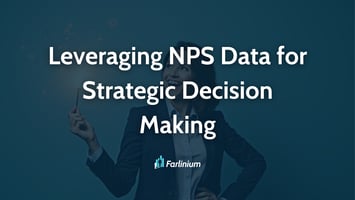Unlock NPS power with a 5-part series on transforming feedback into insights for better CX strategy!
Building NPS into an Omnichannel Strategy for Predictive Outcomes Using More Data Sources
As businesses evolve, so must their approach to understanding and improving customer satisfaction. In this final installment of our NPS best practices series, we’ll explore how to integrate NPS into a broader omnichannel strategy. Combining data from multiple sources allows businesses to develop a more complete and predictive insight into customer behavior. This enables more informed and proactive decision-making, improving strategies and better business outcomes.
Why an Omnichannel Approach Matters
Customers interact with your brand across various channels—online, in-store, through customer service, on social media, and more. An omnichannel approach ensures you capture feedback from all these touchpoints, providing a comprehensive view of the customer experience. Here’s why this matters:
-
Holistic Insights: An omnichannel strategy lets you see the complete picture of your customer’s journey, identifying pain points and opportunities across all interactions.
-
Improved Accuracy: Combining data from multiple sources reduces the risk of bias if you rely solely on one channel for feedback.
-
Predictive Power: Integrating various data points enables more advanced analytics, helping you predict customer behavior and anticipate issues before they arise.
Integrating NPS with Other Data Sources
To build a genuinely omnichannel NPS strategy, you need to integrate feedback from various customer touchpoints:
-
Combine NPS with CRM Data: Integrating NPS data with your Customer Relationship Management (CRM) system allows you to track feedback across the entire customer lifecycle. This integration helps identify trends and tailor interactions based on past feedback.
-
Incorporate Social Listening: Social media is a goldmine of unsolicited customer feedback. By integrating social listening tools with your NPS data, you can capture real-time insights and understand the broader sentiment towards your brand.
-
Leverage In-Store Feedback: For businesses with physical locations, in-store feedback can provide valuable insights into the on-ground customer experience. Digital tools like mobile surveys or feedback kiosks can gather NPS data from in-store interactions.
-
Analyze Digital Behavior: Combine NPS data with website and app analytics to understand how digital experiences impact customer satisfaction. This integration can reveal how specific online behaviors correlate with NPS scores, helping you optimize digital touchpoints.
Driving Predictive Outcomes with Integrated Data
Once you’ve integrated NPS with other data sources, you can leverage this comprehensive dataset to drive predictive outcomes:
-
Enhanced Customer Insights: Integrating NPS with other data sources offers a more complete view of customer behavior, enabling deeper insights into trends and preferences that drive future outcomes.
-
Proactive Decision-Making: Businesses can predict potential challenges or opportunities by leveraging a comprehensive dataset, allowing for more proactive and strategic decision-making.
-
Improved Customer Experience: With predictive analytics powered by integrated data, businesses can anticipate customer needs, refine touchpoints, and enhance the overall customer experience, leading to higher satisfaction and loyalty.
Conclusion
As our series on NPS Best Practices comes to an end, we want to look back on the tools we have provided to help you become a CX expert. We helped you understand that customer loyalty and satisfaction through well-designed NPS surveys are essential for long-term business success.
At Farlinium, we've refined best practices to create effective NPS surveys that deliver valuable insights while minimizing respondent fatigue. These surveys provide more than just a score—they uncover the reasons behind customer ratings, enabling businesses to make informed decisions. Companies can maintain high response rates and gather meaningful data by keeping surveys concise, focusing on critical areas, and avoiding redundant questions.
Furthermore, integrating NPS data with other business metrics, such as financial or operational performance, enhances the accuracy and relevance of insights. This integration allows businesses to drive predictive outcomes, enabling proactive decision-making and improved customer experiences.
As organizations evolve, leveraging NPS in an omnichannel strategy becomes crucial, providing a holistic view of customer behavior across various touchpoints. Businesses can build stronger relationships, increase satisfaction, and drive sustainable growth by continuously refining NPS strategies and acting on customer feedback.




